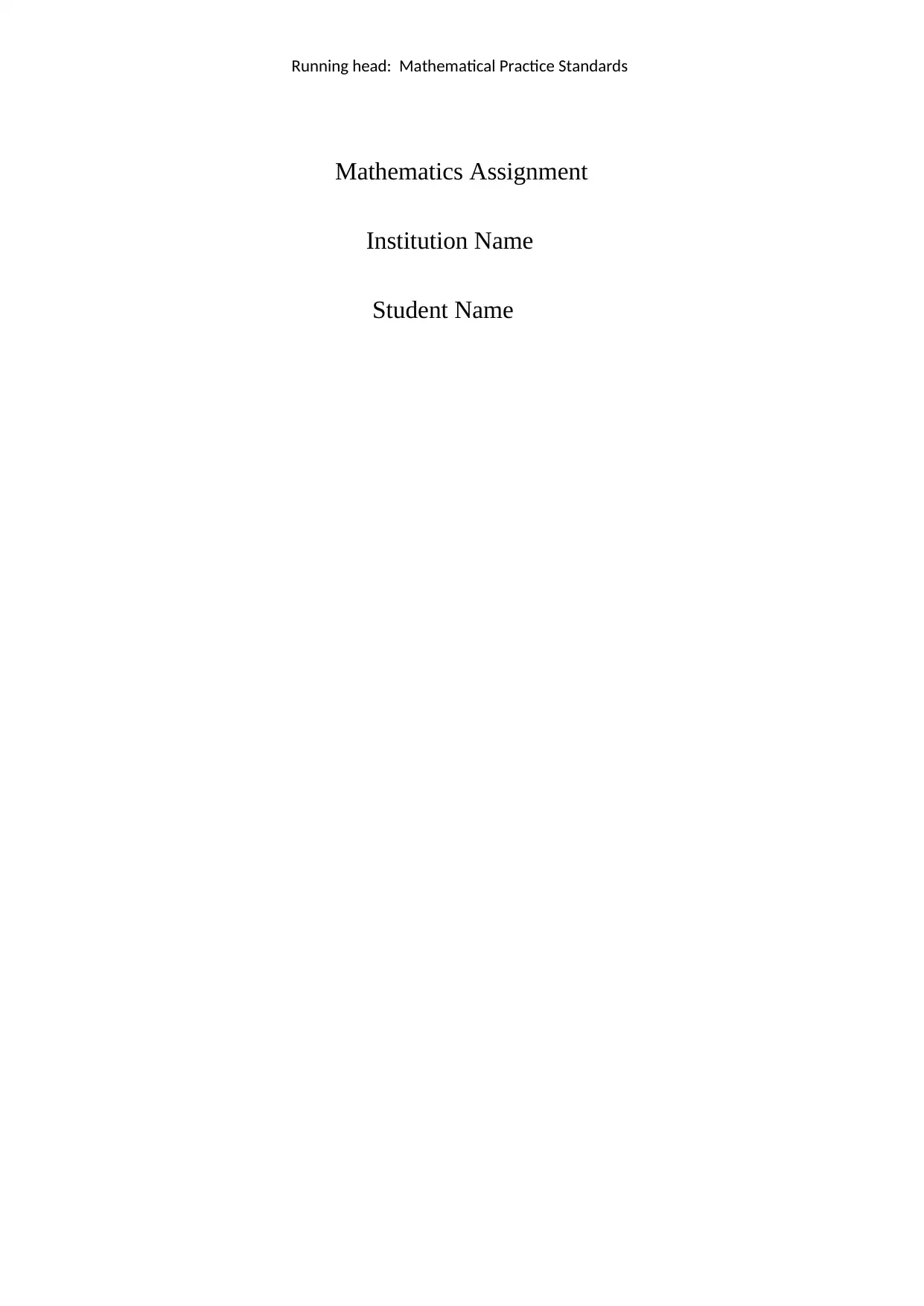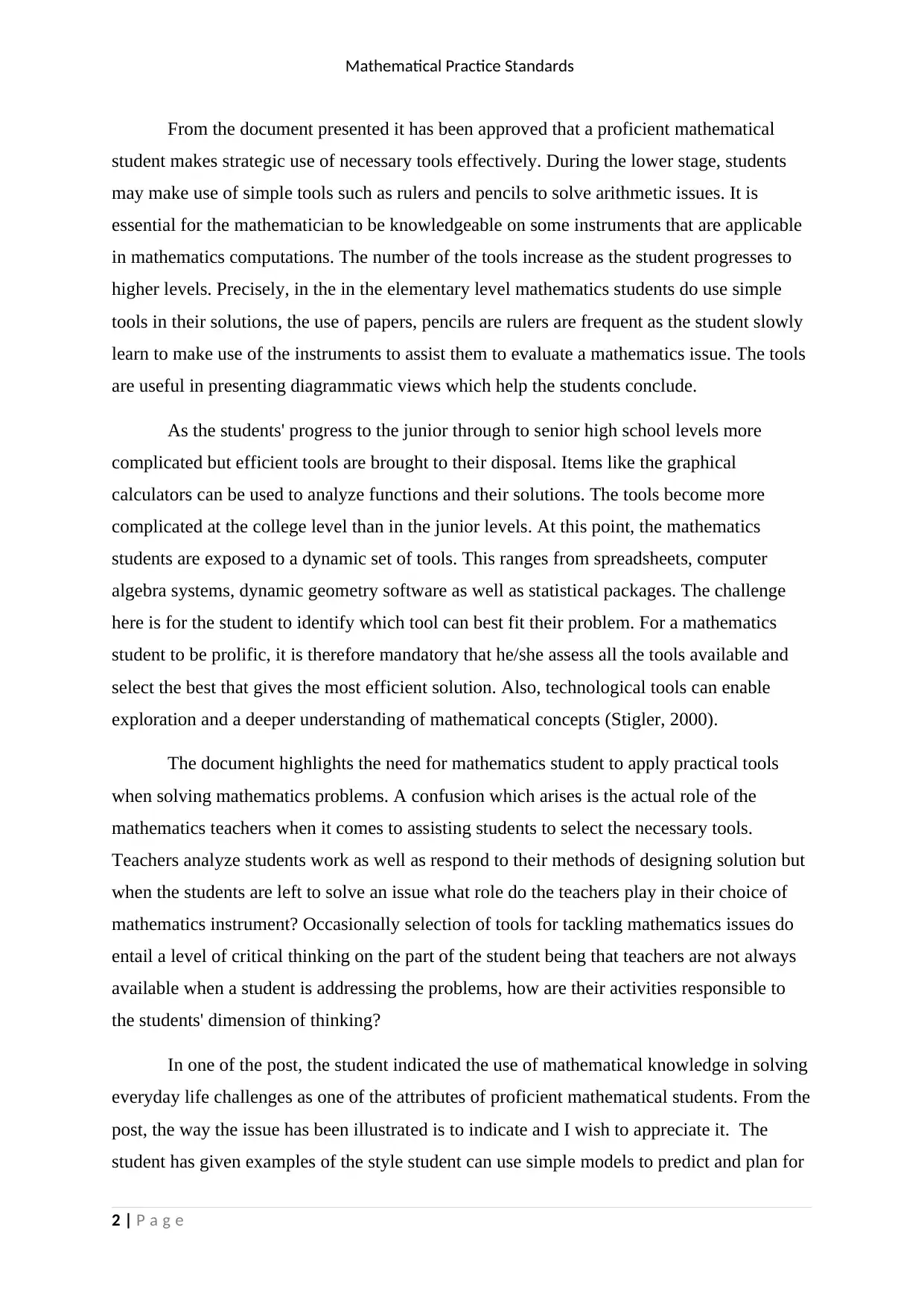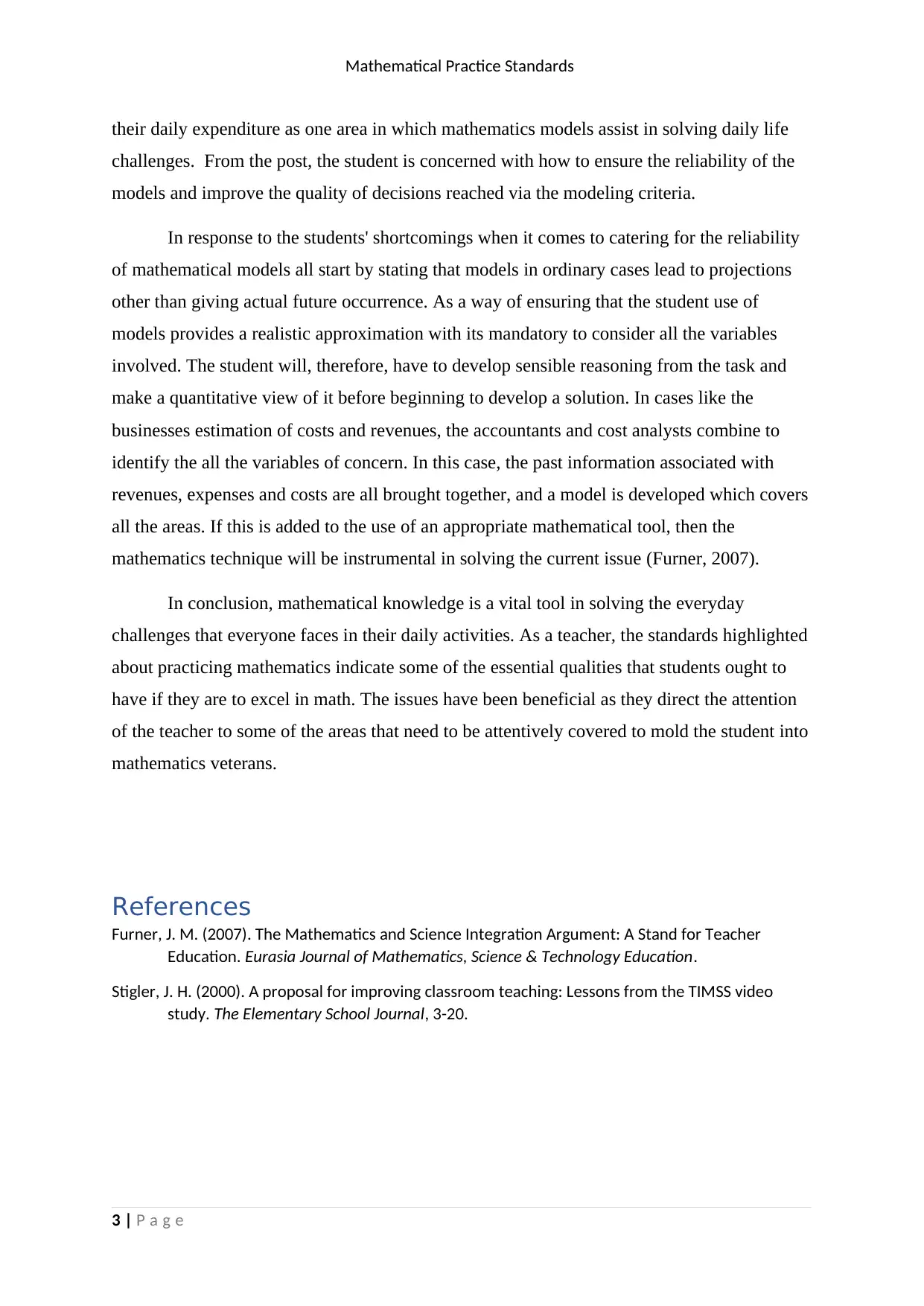Mathematical Practice Standards and Tools in Mathematics Education
VerifiedAdded on 2020/05/28
|4
|874
|200
Homework Assignment
AI Summary
This assignment delves into the realm of mathematical practice standards, emphasizing the strategic use of tools in problem-solving across different educational levels. It highlights the progression of tools from basic instruments like rulers and pencils in elementary school to more advanced technologies such as graphical calculators and computer algebra systems in higher grades. The document stresses the importance of teachers guiding students in selecting the appropriate tools and fostering critical thinking. Furthermore, it explores the application of mathematical knowledge in solving real-life challenges, such as financial planning, and underscores the need for developing reliable mathematical models by considering all relevant variables. The conclusion reinforces the significance of mathematical proficiency in everyday life and the essential qualities that students should possess to excel in mathematics, providing valuable insights for educators to cultivate future mathematicians.
1 out of 4






![[object Object]](/_next/static/media/star-bottom.7253800d.svg)